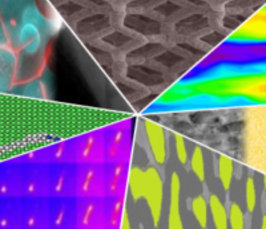STZ vortex unit – the key to understand and control shear banding in metallic glasses
- Date: Jul 6, 2021
- Time: 02:00 PM - 03:00 PM (Local Time Germany)
- Speaker: Dr. Daniel Şopu
- Group Leader at the Erich Schmid Institute of Materials Science in Austria
- Location: Online
- Room: Virtual Lecture
- Host: Dr. Tobias Brink

Shear bands (SBs) are plasticity carriers of metallic glasses (MGs) and
the rapid runaway of a detrimental SB often results in catastrophic
failure of MGs under imposed stresses. The ability to control plastic
deformation of MGs is based on the capacity to influence the percolation
of shear transformation zones (STZs) that ultimately leads to SB
formation. STZs remain the fundamental unit to explain plastic flow in
MGs. Although STZs have been known and characterized for decades now,
the morphological and dynamical characteristics of STZs are not fully
understood, yet. In this presentation, by means of molecular dynamics
and athermal quasi-static simulations, I propose a novel atomic-level
mechanism underlying the STZ activation and percolation processes that
could provide a sound and realistic microscopic description of shear
band formation and propagation mechanisms in MGs. The mechanism is based
on the autocatalytic generation of successive strong strain (STZ) and
rotation fields (vortex-like motion), leading to STZ percolation and,
ultimately, to the formation of a shear band. These results could build a
bridge between the discrete nature of STZs at the atomic-level and the
rather continuous character of shear bands at the microscale. So far,
the STZ-vortex mechanism allowed to follow the structural and dynamical
evolution during shearing in MGs and provided an atomistic description
of deformation mechanisms like shear band formation and interaction,
shear band branching and multiplication, or shear band blocking and
deflection. Additionally, the STZ-vortex mechanism was of primary
importance for understanding the brittle-to-ductile transition from
cracking to localized shear banding and homogeneous deformation. Through
the proper control of the STZ-vortex sequence, one could handle the
shear band dynamics and avoid runaway instability, thereby improving the
plastic deformability of metallic glasses at room temperature